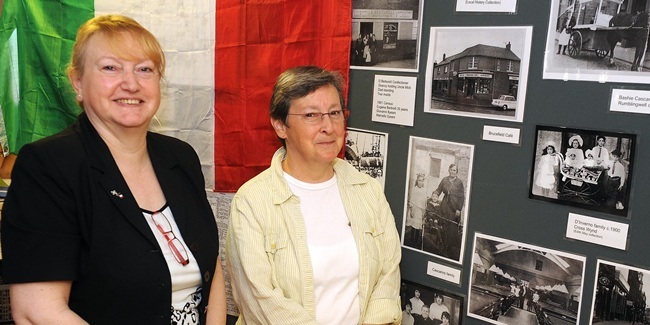West Fife is awash with good old fashioned Italian names, many above the doors of ice cream emporia or mouthwatering fish and chip shops.
But what is really known of the reason so many made the long trip from the sun-kissed Mediterranean country to settle in the colder climes around Dunfermline?
That’s what two local women are trying to find out.
Evelyn Vernolini whose husband Frank’s family settled in Fife decades ago and Norma Alari, a member of the chip shop dynasty, held a small exhibition of photo-graphs, certificates and census of various Italian families who settled in the area last century.
While the families were integrated into the area, nothing of their story has ever been told.
That is something Evelyn and Norma hope to put right by collating their stories and photographs to produce a book.
Evelyn explained she and Norma decided to put the book together to explain the effect Italians had on the Dunfermline area.
They revealed that some Italians had come to the town as early as the 1880s and it appeared that easy passage was granted if there was a sponsor in their new homeland.
But why so many came to west Fife, as well as the west coast of Scotland, particularly Greenock and Gourock, was not so clear.
“One reason I have been told is that there were large families who by and large lived in small villages and there just wasn’t enough work for the young adults to be supported,” said Norma.
“In addition, there was a chestnut famine, similar to the Irish potato famine, and widespread poverty, so there had to be economic migration.
“Some people arrived with only a birth certificate, they did not need immigration papers, but from what I gather, they needed to have a sponsor.”
So many, who had lived off the land and been itinerant workers, came to make a new home in Scotland predominantly from the medieval Tuscan city of Barga or from an area between Rome and Naples.
And they brought with them, naturally, ice cream, but also the UK’s first chippies. So much so that there is now a fish and chip festival held in Barga.
In Dunfermline in the 1920s there were around 20 different Italian families that the two women know about already. And they know that one of the first was Antonio Staffiare.
“Now we are trying to get all the families together and a small book put together of how they came to be here and what they did for the town,” said Evelyn.
“Because it would be nice to acknowledge all the people who lived here and added to our culture.”Any information can be passed on by emailing italian-descendants@hotmail.co.uk.
